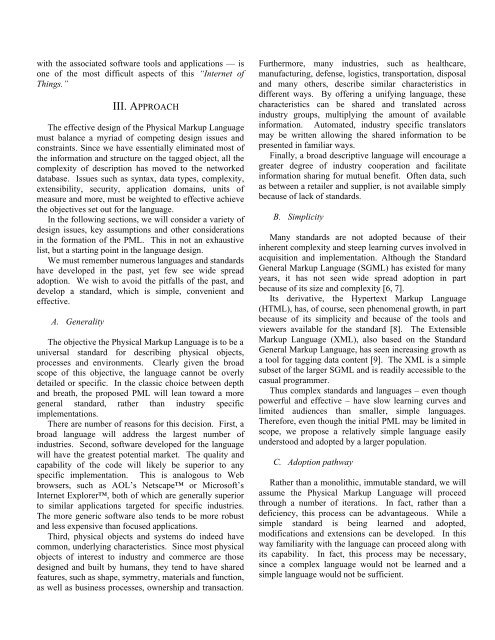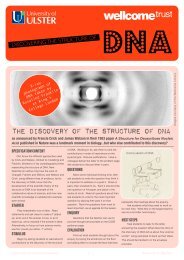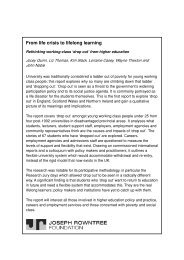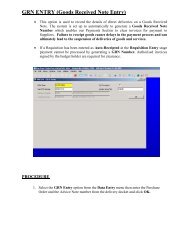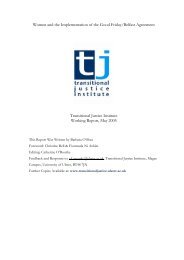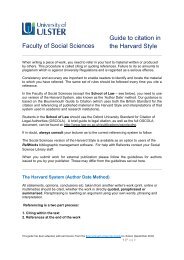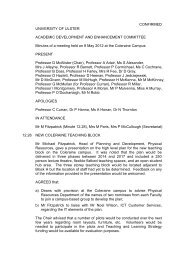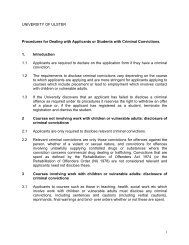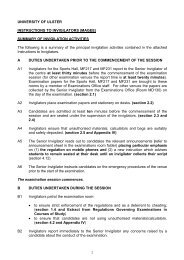The Physical Markup Language - Auto-ID Labs
The Physical Markup Language - Auto-ID Labs
The Physical Markup Language - Auto-ID Labs
Create successful ePaper yourself
Turn your PDF publications into a flip-book with our unique Google optimized e-Paper software.
with the associated software tools and applications — is<br />
one of the most difficult aspects of this “Internet of<br />
Things.”<br />
III. APPROACH<br />
<strong>The</strong> effective design of the <strong>Physical</strong> <strong>Markup</strong> <strong>Language</strong><br />
must balance a myriad of competing design issues and<br />
constraints. Since we have essentially eliminated most of<br />
the information and structure on the tagged object, all the<br />
complexity of description has moved to the networked<br />
database. Issues such as syntax, data types, complexity,<br />
extensibility, security, application domains, units of<br />
measure and more, must be weighted to effective achieve<br />
the objectives set out for the language.<br />
In the following sections, we will consider a variety of<br />
design issues, key assumptions and other considerations<br />
in the formation of the PML. This in not an exhaustive<br />
list, but a starting point in the language design.<br />
We must remember numerous languages and standards<br />
have developed in the past, yet few see wide spread<br />
adoption. We wish to avoid the pitfalls of the past, and<br />
develop a standard, which is simple, convenient and<br />
effective.<br />
A. Generality<br />
<strong>The</strong> objective the <strong>Physical</strong> <strong>Markup</strong> <strong>Language</strong> is to be a<br />
universal standard for describing physical objects,<br />
processes and environments. Clearly given the broad<br />
scope of this objective, the language cannot be overly<br />
detailed or specific. In the classic choice between depth<br />
and breath, the proposed PML will lean toward a more<br />
general standard, rather than industry specific<br />
implementations.<br />
<strong>The</strong>re are number of reasons for this decision. First, a<br />
broad language will address the largest number of<br />
industries. Second, software developed for the language<br />
will have the greatest potential market. <strong>The</strong> quality and<br />
capability of the code will likely be superior to any<br />
specific implementation. This is analogous to Web<br />
browsers, such as AOL’s Netscape or Microsoft’s<br />
Internet Explorer, both of which are generally superior<br />
to similar applications targeted for specific industries.<br />
<strong>The</strong> more generic software also tends to be more robust<br />
and less expensive than focused applications.<br />
Third, physical objects and systems do indeed have<br />
common, underlying characteristics. Since most physical<br />
objects of interest to industry and commerce are those<br />
designed and built by humans, they tend to have shared<br />
features, such as shape, symmetry, materials and function,<br />
as well as business processes, ownership and transaction.<br />
Furthermore, many industries, such as healthcare,<br />
manufacturing, defense, logistics, transportation, disposal<br />
and many others, describe similar characteristics in<br />
different ways. By offering a unifying language, these<br />
characteristics can be shared and translated across<br />
industry groups, multiplying the amount of available<br />
information. <strong>Auto</strong>mated, industry specific translators<br />
may be written allowing the shared information to be<br />
presented in familiar ways.<br />
Finally, a broad descriptive language will encourage a<br />
greater degree of industry cooperation and facilitate<br />
information sharing for mutual benefit. Often data, such<br />
as between a retailer and supplier, is not available simply<br />
because of lack of standards.<br />
B. Simplicity<br />
Many standards are not adopted because of their<br />
inherent complexity and steep learning curves involved in<br />
acquisition and implementation. Although the Standard<br />
General <strong>Markup</strong> <strong>Language</strong> (SGML) has existed for many<br />
years, it has not seen wide spread adoption in part<br />
because of its size and complexity [6, 7].<br />
Its derivative, the Hypertext <strong>Markup</strong> <strong>Language</strong><br />
(HTML), has, of course, seen phenomenal growth, in part<br />
because of its simplicity and because of the tools and<br />
viewers available for the standard [8]. <strong>The</strong> Extensible<br />
<strong>Markup</strong> <strong>Language</strong> (XML), also based on the Standard<br />
General <strong>Markup</strong> <strong>Language</strong>, has seen increasing growth as<br />
a tool for tagging data content [9]. <strong>The</strong> XML is a simple<br />
subset of the larger SGML and is readily accessible to the<br />
casual programmer.<br />
Thus complex standards and languages – even though<br />
powerful and effective – have slow learning curves and<br />
limited audiences than smaller, simple languages.<br />
<strong>The</strong>refore, even though the initial PML may be limited in<br />
scope, we propose a relatively simple language easily<br />
understood and adopted by a larger population.<br />
C. Adoption pathway<br />
Rather than a monolithic, immutable standard, we will<br />
assume the <strong>Physical</strong> <strong>Markup</strong> <strong>Language</strong> will proceed<br />
through a number of iterations. In fact, rather than a<br />
deficiency, this process can be advantageous. While a<br />
simple standard is being learned and adopted,<br />
modifications and extensions can be developed. In this<br />
way familiarity with the language can proceed along with<br />
its capability. In fact, this process may be necessary,<br />
since a complex language would not be learned and a<br />
simple language would not be sufficient.


